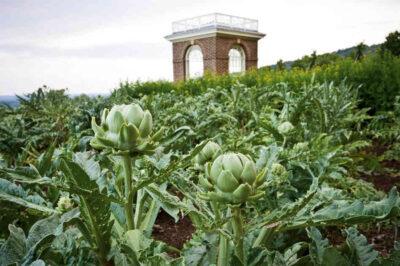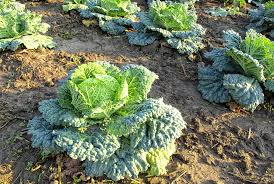
Enjoy tasty artichoke year after year!
If you are the type of gardener who likes to grow vegetables but rarely has time to plan and plant a garden, perennial vegetables may be a good choice for your lifestyle. There are vegetables you can plant once, then never have to plant again. You can have your garden, but with less effort than usual.
Some planning is needed for best results. Try to pick a sunny site for the garden and prepare the soil so it is a healthy bed for the plants. Match the plants you buy to the amount of sunlight the garden will get and the type of soil you are planting in. Make sure the soil drains well because few plants do well in soggy dirt.
Perennial plants can take a couple of years to fully grow and mature, but you can still enjoy them in their own harvest time. Here’s some of the best perennial vegetables:
2. Artichoke – Artichoke has a tasty flower bud and the plant can grow up to six feet in height. It actually produces a large bud with smaller buds underneath. It needs room to spread (at least two or three feet apart), well-drained soil and regular weeding to grow well. Harvest buds when they reach a diameter of three inches. The buds should be firm and tight at the time of harvesting. After the fall harvest, cut plants to ground level and cover with mulch [1] (organic is best). You can then remove the mulch in the spring when the ground is no longer frozen.
3. Rhubarb – Rhubarb is fun to grow as it is colorful and tasty (remember, though: The leaves are toxic to humans). This vegetable is primarily used for pies and jams but there are many savory dishes that it can be used for as well. Rhubarb likes a colder climate.
The Best Source For Perennial Heirloom Seeds Is Right Here! [2]
It does well in soil with good drainage with a bit of shade. Rhubarb grows best when planted from a crown, which you can get at a garden center or green-thumbed relative. Harvest only the stalks. It may take a year or two to fully grow to get big stalks, but you can harvest it when it is big enough (and tastes good) for you.
4. Horseradish – Here is a member of the mustard family. Its leaves are edible, as are the roots. The roots have the strongest flavor and are used to make the popular condiment. Harvest in the fall and only take the side roots. In the new growing season, horseradish taproots will create new produce. Take most, but not all, of the roots as it can overtake the garden.
5. Bunching Onions – This perennial type of onion grows in characteristic clumps. It multiplies on its own with no help needed. This vegetable likes moist but not soggy soil. Bunching onions tend to be very hardy, even in the cooler climates. You can leave this type of onion over the winter or have repotted to keep inside until spring. It can be used in vegetable or ornamental gardens.

Easy to grow, kale is an easy choice for the garden.
6. Garlic – This is a healthy edition to any garden. Garlic likes plenty of sun and well-drained soil. It is grown and harvested just like any annual vegetable. To keep it coming back every year, you pinch off the seed buds when they form. This will allow the larger plants to develop cloves. Some people pull up the larger plants near the end of the season to replant the next year.
7. Kale and Collard Greens – Kale is known as a superfood and collard greens are known to be one of the healthiest of all vegetables. They are both good for smoothies and salads. They are relatives of cabbage and mustard so are very hardy. Both vegetables prefer full sun but will thrive in an area with partial shade. You can harvest kale when its leaves are bright green or a bluish-green. Note that depending on your climate these greens may be biennial rather than perennial – however, even if they are biennial for you, you’ll still be able to enjoy a few extra months of these harvests in the spring before having to re-plant.
Most perennial vegetables (although limited in number) are usually very hardy and can survive in colder climates. They also are low maintenance and inexpensive to purchase compared to annuals. Remember that perennials only bloom in one or two seasons each year. There are plants which bloom in the spring, summer and fall. All perennials tend to have characteristic foliage that can be enjoyed when the plant is not blooming and just like people, there are perennials in all shapes and sizes.
What are your favorite perennial vegetables? Share your tips in the section below:
Bust Inflation In Your Own Backyard With A Super-Garden. Read More Here. [3]